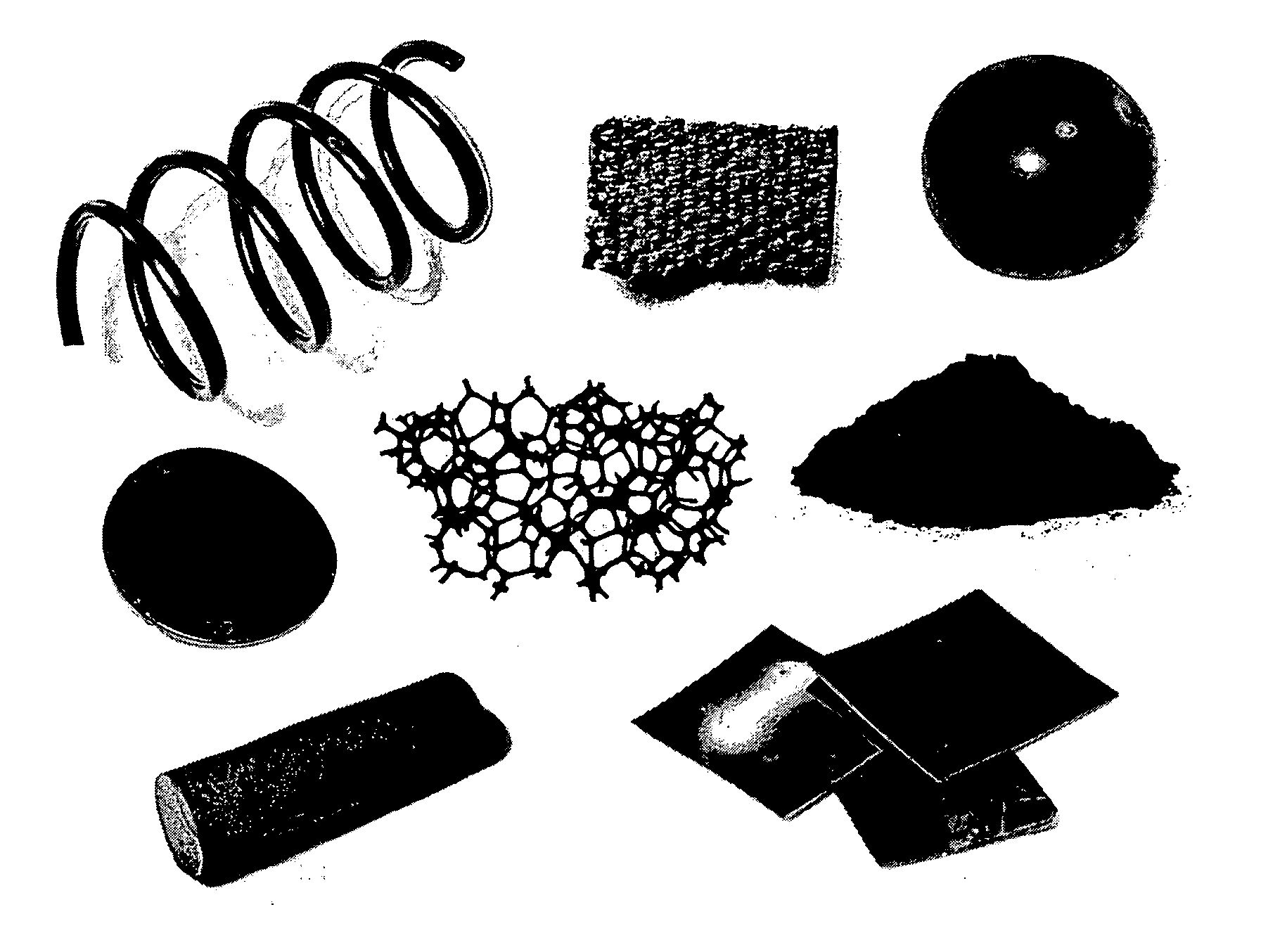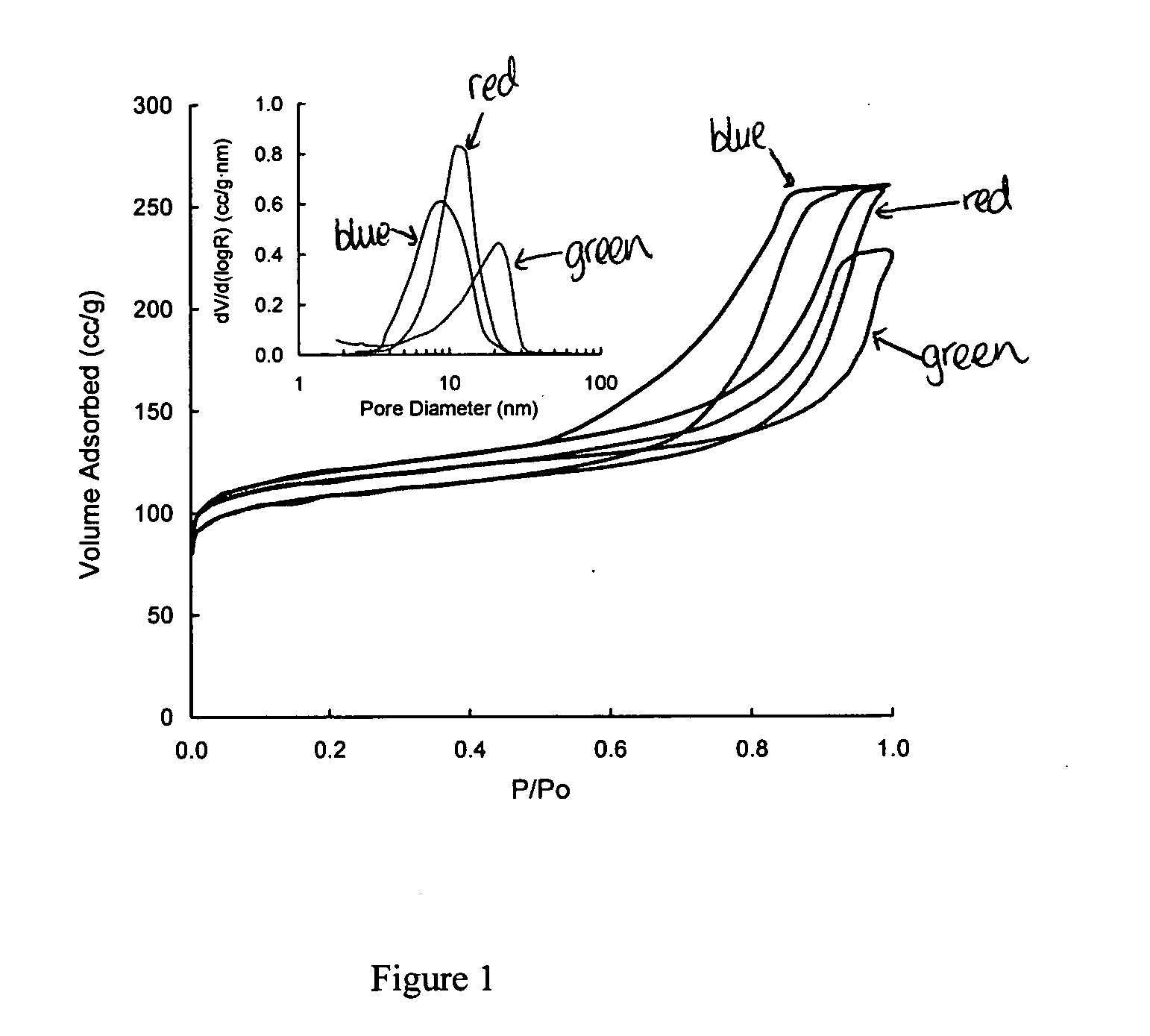Porous carbon structures and methods
a technology of porous carbon and carbon fiber, applied in the field of porous carbon materials, can solve the problems of limited use, relatively expensive processes, and inability to produce porous materials
- Summary
- Abstract
- Description
- Claims
- Application Information
AI Technical Summary
Benefits of technology
Problems solved by technology
Method used
Image
Examples
examples
[0051] In the following examples “carbon nanofoam” is used as a term to define any and all carbon structures in accordance with the invention. Various forms of carbon nanofoam (CNF) were made, and general results are first described: Nitrogen sorption analysis indicates that typical CNF made in accordance with one set of working examples contains both micropores and mesopores, with a mean pore diameter of 2-50 nm, a narrow mesopore size distribution, a surface area of 200-500 m2 / g, and a pore volume of 0.1-0.6 cm3 / g. The presence of porosity and the pore sizes have also been confirmed by transmission electron microscopy (TEM), which shows that the pores are highly interconnected, giving CNF a foam-like morphology. The nitrogen adsorption-desorption isotherm shows a hysteresis loop characteristic of mesoporous foam-like materials.
[0052] The framework of CNF made accordance with this set of working examples is unique. TEM of CNF shows that the walls are comprised of crystalline, orde...
PUM
| Property | Measurement | Unit |
|---|---|---|
| Length | aaaaa | aaaaa |
| Length | aaaaa | aaaaa |
| Length | aaaaa | aaaaa |
Abstract
Description
Claims
Application Information
 Login to View More
Login to View More - R&D
- Intellectual Property
- Life Sciences
- Materials
- Tech Scout
- Unparalleled Data Quality
- Higher Quality Content
- 60% Fewer Hallucinations
Browse by: Latest US Patents, China's latest patents, Technical Efficacy Thesaurus, Application Domain, Technology Topic, Popular Technical Reports.
© 2025 PatSnap. All rights reserved.Legal|Privacy policy|Modern Slavery Act Transparency Statement|Sitemap|About US| Contact US: help@patsnap.com



